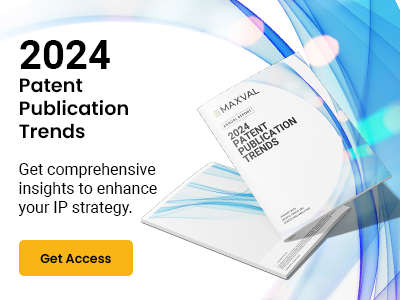Artificial Intelligence (AI) is revolutionizing industries across the globe, and patent searching is no exception. The field of intellectual property (IP) is undergoing a seismic shift with the integration of AI into patent searching. AI tools promise to streamline the labor-intensive process of sifting through millions of patents and non-patent literature, offering speed, ease of use, and strategic insights. However, the complexity of patent law, coupled with the limitations of AI, necessitates keeping a human-in-the-loop to verify results.
Leveraging AI in Patent Searching
AI systems, powered by natural language processing (NLP), machine learning, and graph-based algorithms, is transforming the arduous process of conventional patent searching into one that is faster, easier to use, and more comprehensive.
For example, Relecura, a leading provider of AI-driven IP search and classification solutions, offers sophisticated and secure technology that turns complex patent data into actionable insights. Relecura enables organizations to accelerate decision-making in innovation management by rapidly identifying technological trends, evaluating similar IP assets, assessing competitive landscapes, and analyzing the strengths and weaknesses of various inventions.
Key benefits include:
- Speed: AI systems can process and analyze millions of patent records in mere seconds, identifying relevant documents faster than human analysts.
- Ease of Use: Users can enter queries in plain language (even a short phrase), and the system will find semantically related patents across the globe.
- Scalability: AI tools excel at handling large datasets, allowing them to delve into international patent databases and cross-reference information efficiently.
- Insights: AI can provide actionable insights, such as spotting emerging trends in patent filings and highlighting areas ripe for innovation.
- Inventor Engagement: Faster, lower cost novelty searches can provide increased engagement for inventor teams due to rapid interactivity and feedback.
AI Patent Searching and a Human-in-the-Loop Strategy
AI can rapidly surface potential prior art, but patent searchers must also take additional steps to ensure the best results possible. In particular, patent searchers need to be aware of some limitations which currently exist:
- Accuracy and “Hallucinations”: AI tools can produce plausible-sounding but false results. In legal contexts, judges have warned of “algorithmic pattern misperceptions” – e.g. lawyers citing fictitious cases found by ChatGPT (americanbar.org).
- Legal Nuances: AI struggles with the subtleties of patent law, such as claim construction, obviousness determinations, or jurisdiction-specific eligibility criteria (e.g., USPTO’s Alice/Mayo framework). These require human expertise for accurate interpretation.
- Data Quality and Bias: The effectiveness of AI depends on the quality and comprehensiveness of its training data. Incomplete databases or biased algorithms can lead to false positives (irrelevant results) or false negatives (missed prior art).
- Incomplete Coverage: No tool includes all sources. Databases may lag (recent filings might be missing or unpublished), and some tools exclude certain national collections or non-patent literature. Relying on one AI product risks missing anything outside its scope.
- Lack of Contextual Judgment: AI can identify similar text, but it cannot assess patentability or claim scope like a human. It won’t warn you if a reference is only tangentially related or analyze nuanced differences in claim language. Patent searchers and attorneys still must use their expertise to interpret how a patent applies.
- Transparency and Bias: Many AI algorithms are “black boxes.” Unless the tool shows you the concepts and weights it used, you may not know why certain patents were ranked highly. This can make results unpredictable.
- Data Privacy and Compliance: Sensitive patent applications or attorney work product should not be fed into uncontrolled AI. Ensure any AI tool complies with confidentiality rules and security. (Check your firm or office policy on generative AI.)
Currently, AI-generated results should be validated to ensure legal and technical accuracy, as over-reliance can lead to costly oversights. Missteps with a patent search could undermine a case or filing. Even AI tools themselves (e.g. ChatGPT) explicitly advises users that “only a patent search specialist or attorney/agent can conduct a thorough and accurate search” (dexpatent.com). In practice, you should use AI to assist a skilled searcher, not replace one.
AI is a speed-and-scope booster, and can dramatically improve the quality of search results. That said, it is not a substitute for professional judgment. Until AI matures to where it’s 100% reliable, it’s a best practice to keep humans-in-the-loop to verify, contextualize, and defend search results before it influences a patent application or litigation strategy.




